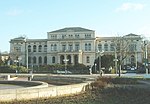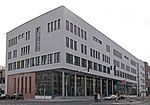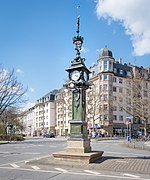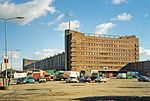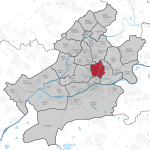Heinrich-von-Gagern-Gymnasium
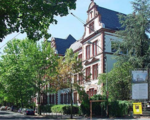
The Heinrich-von-Gagern-Gymnasium (abbreviation: HvGG; English: Heinrich von Gagern Gymnasium) is a Gymnasium with a focus on the classical humanities and modern languages in the Ostend city district of Frankfurt am Main, Germany. Founded in 1880, the Heinrich von Gagern Gymnasium enjoys a reputation for academic excellence in the greater Frankfurt area. It is one of only a few schools which prepare students in 12 instead of the usual 13 years for the state-wide university preparatory examination, the Abitur, and its students consistently achieve the highest average grade among Frankfurt's secondary schools. The Heinrich von Gagern Gymnasium emphasizes classical education in ancient and modern languages. Is one of only two schools in Frankfurt that teach Latin and ancient Greek. Latin is compulsory for all students from the fifth to the tenth grade. Ancient Greek, French or Italian must be selected as a third foreign language from the eighth grade onward.
Excerpt from the Wikipedia article Heinrich-von-Gagern-Gymnasium (License: CC BY-SA 3.0, Authors, Images).Heinrich-von-Gagern-Gymnasium
Bernhard-Grzimek-Allee, Frankfurt Ostend (Bornheim/Ostend)
Geographical coordinates (GPS) Address External links Nearby Places Show on map
Geographical coordinates (GPS)
| Latitude | Longitude |
|---|---|
| N 50.114722222222 ° | E 8.7 ° |
Address
Heinrich-von-Gagern-Gymnasium
Bernhard-Grzimek-Allee 6-8
60316 Frankfurt, Ostend (Bornheim/Ostend)
Hesse, Germany
Open on Google Maps

